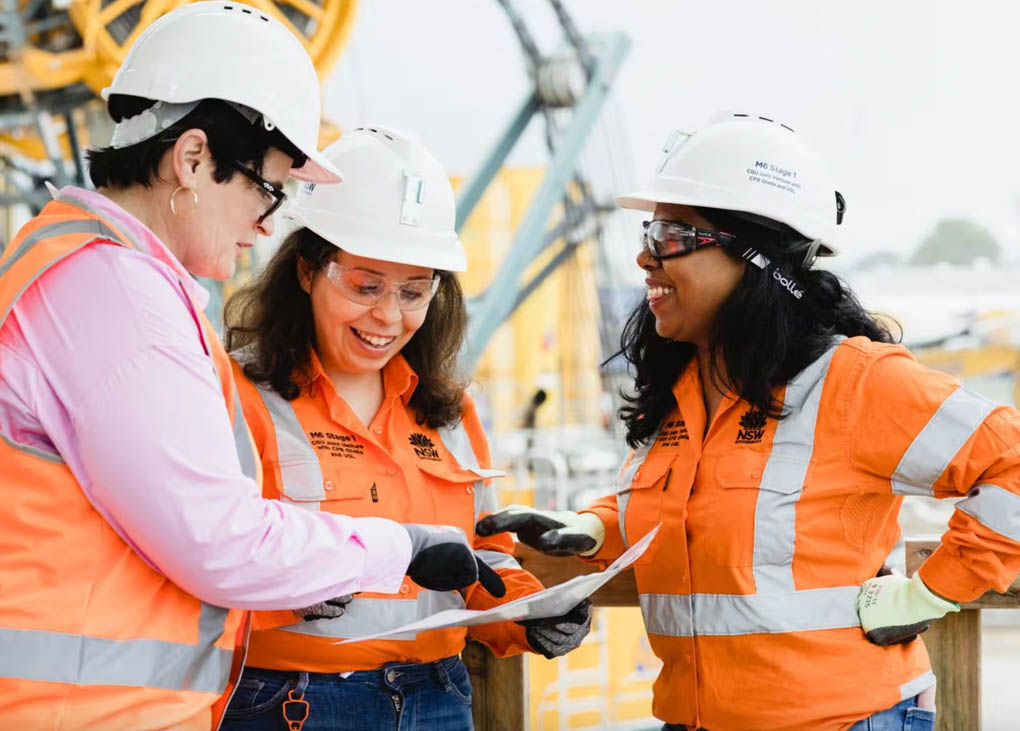Ahead of National Tradie Day on Friday, September 20, Andrew Sezonov from WPC Group speaks with Emma Wallace, author of This Girl Built That.
When I see a girl drawing a truck or “princess” builder, it makes me proud of what the sector’s future might entail. The number of preteen girls showing an interest in joining the construction industry is advancing significantly.
One person making a difference in this field is 30-year-old Australian woman Emma Wallace. Working for a multinational construction company, Wallace is helping to shatter the stereotype that construction is predominantly a man’s world. Her self-illustrated picture book, This Girl Built That, published in February this year, portrays females working in construction in a fun and engaging way. Through this book, she aims to normalise the industry as a career option for girls globally.
“The issue of few women working in construction is pretty common across the board, and it’s positive that I’m seeing increasing numbers of 16- to 20-year-old females joining the sector,” Wallace says.
“However, I want to plant the ideas, the possibilities, for young girls before they’re influenced by stereotypes. It would be great to get a copy of the book in every one of Australia’s primary schools.”

Women: about one in 10 construction workers
In Australia, women make up between just nine and 13 per cent of the construction workforce. According to recent research, closing this gap is a key industry goal, with companies aiming to attract and retain more women.
Despite this, barriers remain. These include long and inflexible work hours, limited career development opportunities, and negative perceptions of women’s abilities. Construction sites can traditionally be filled with a dominant masculine culture that may intimidate or exclude women.
Those women in construction who stay, like Wallace, tend to maintain a resilient persona with strong technical, interpersonal and coping skills.
Another stereotype hurting the construction industry is the misconception that it only offers hands-on traditional trade jobs. However, the industry offers so much more, from traditional trades including HVAC&R, electrical and plumbing, to office and management roles. Most positions require problem-solving, critical thinking and technical literacy.
“When people ask me what I like about working in the construction sector, I say the three Ps: the people, the projects and the problem solving,” Wallace says.
“I don’t work as a tradesperson, but in a site office. That means I work closely with tradespeople on-site every day, plus frequently with clients, architects, engineers, consultants, and building surveyors.”
Options aplenty
Wallace’s book highlights the various roles on a commercial construction site. Most characters were based on real-life women she has worked with on projects.
As an assistant services manager, Wallace helps oversee the mechanical, electrical, plumbing, and other operational systems for large commercial construction projects in Melbourne, Australia. She works on one project at a time, often with thousands of workers involved over the project lifetime.
Growing up, Wallace always had a passion for art. A simple request – “draw me a window” – set her on a course from product design engineering at university to the construction industry.
“I’d only chosen that university course in mechanical engineering and industrial design because it continued the subjects I loved doing at school, but I later discovered a passion for construction, and found those roles better aligned to my interests”.
A new world of work
A year’s industrial placement as a project coordinator during her degree solidified her interest. While at university, she successfully applied for a graduate construction management role with a global construction company and has been there since 2019.
Her art found an outlet in construction-themed illustrations, which she began posting on Instagram. Through the National Association of Women in Construction newsletter, she successfully applied for a grant that helped her write and illustrate her book.
“My hope was that the book would inspire a little girl to consider a job in construction. Maybe for little boys to know that girls can work in construction too. It could also be for adults to challenge who they expect to see on a construction site.”
Wallace’s work is a small but significant step toward a more inclusive future for the construction industry. By blending her passions for construction and art, she’s laying the foundations for the next generation of talent.
Real progress will require more than individual efforts; it demands systemic change from industry leaders. To truly open doors for women, organisations must ensure policies are effectively implemented, resourced and monitored.
The path forward is clear: a more inclusive, flexible and supportive industry will benefit everyone.
About the author

Andrew Sezonov is Group General Manager at WPC Group, which has recently expanded its operations to Western Sydney with its new office in Liverpool. WPC Group allows employers to list apprenticeship vacancies, priming them to foster more inclusive opportunities within the region.



Leave a Reply